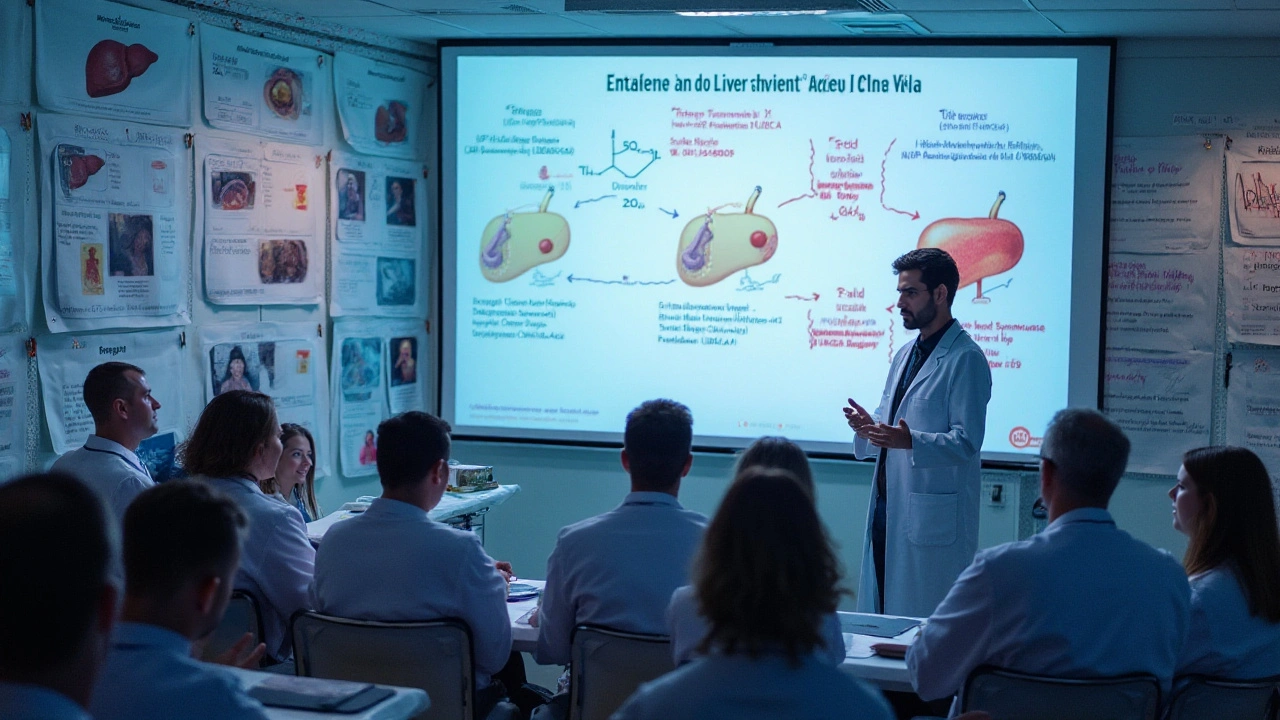Ursodeoxycholic Acid (UDCA) — what it does and who it helps
Ursodeoxycholic acid, often called UDCA, is a prescription bile acid. Doctors use it to treat specific liver and gallbladder problems — most commonly primary biliary cholangitis (PBC) and small cholesterol gallstones. UDCA changes the bile composition, helps bile flow, and can slow liver damage in some conditions.
How UDCA works and when it's prescribed
UDCA makes bile less toxic to liver cells and improves bile drainage. For people with PBC it can reduce liver enzymes and slow disease progression. For small, non-calcified cholesterol gallstones, UDCA can sometimes dissolve stones over months to years if surgery isn’t an option. Doctors also use UDCA in certain pregnancy-related or drug-related cholestasis cases, but that decision depends on the situation.
Practical dosing, what to expect, and safety
Doses vary by condition and body weight. A common dose for PBC is about 13–15 mg per kg of body weight per day, divided into two or three doses. For gallstone dissolution, lower doses around 8–10 mg/kg/day are often used. Treatment usually lasts months, and benefits may take several weeks to appear. Never change dose or stop suddenly without talking to your prescriber.
Side effects are usually mild. The most common complaints are diarrhea, stomach discomfort, and nausea. Some people notice itching or temporary weight changes. Rarely, liver tests can worsen — that’s why doctors check liver function before starting UDCA and periodically afterwards. If you get new or worsened jaundice, severe stomach pain, or persistent diarrhea, contact your doctor right away.
Watch for interactions: bile acid sequestrants like cholestyramine can reduce UDCA absorption, so separate dosing by several hours. Tell your provider about all medicines and supplements you take. Pregnancy and breastfeeding decisions are individualized — UDCA has been used in pregnancy in certain cholestasis cases, but you should discuss risks and benefits with your clinician.
Practical tips: take UDCA with food if you get stomach upset. Use a pill organizer or alarms for divided doses. Keep follow-up blood tests as recommended — those checks guide whether the drug is helping or needs adjustment. If you’re being treated for gallstones, expect treatment to take many months; imaging and labs will track progress.
UDCA isn’t right for everyone. It’s not effective for gallstones that are large, calcified, or causing repeated blockages. It’s also not used when the bile duct is fully blocked. Your doctor will decide based on imaging, labs, symptoms, and overall health.
If you have questions about UDCA — dose, side effects, or how long you’ll need it — ask your provider. Clear communication and regular monitoring are the best ways to get benefits while avoiding problems.
Comparing Ursodeoxycholic Acid to Alternative Liver Treatments
When it comes to addressing liver diseases, Ursodeoxycholic Acid (UDCA) remains a widely discussed option in the medical community. This article dives deep into how UDCA works compared to other common liver treatments, exploring its benefits and limitations. With liver health being a crucial aspect of overall wellness, understanding these treatment options can help guide informed decisions. We will also uncover lesser-known facts and provide practical tips on liver care. Join us in this exploration of liver treatments and find out which might be best suited for your needs.

